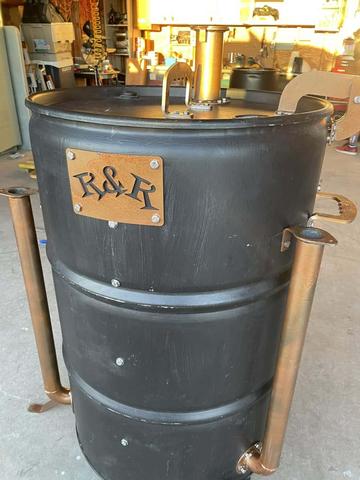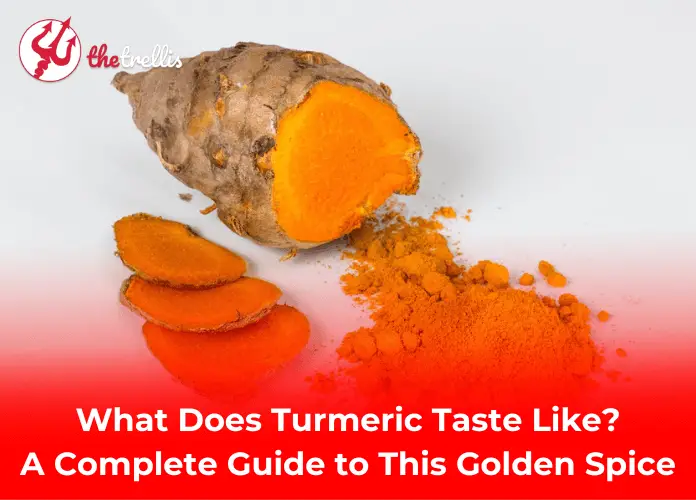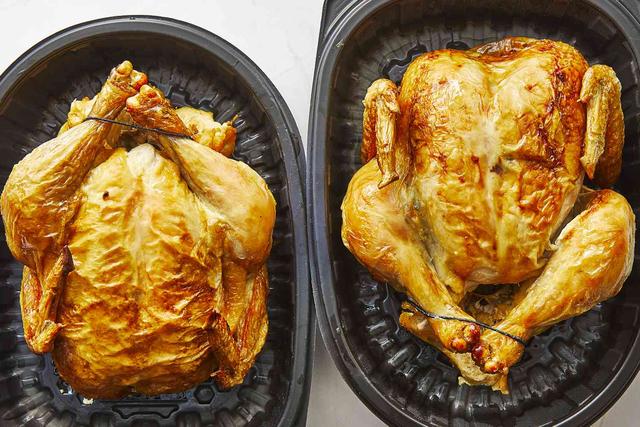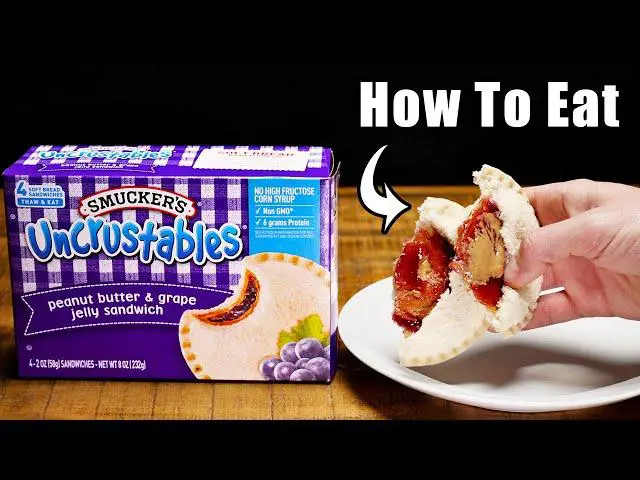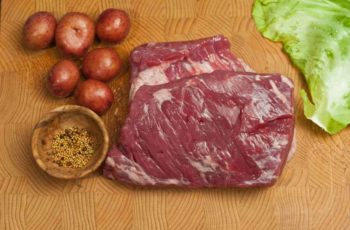
Discover the Essence of Brisket: Unveiling the Secrets behind this Iconic Meat Cut
Where is beef brisket used?
Beef brisket is used in various cuisines and dishes around the world. In the United States, it has earned the nickname “King of Texas barbecue” and is a staple in many barbecue traditions. It is also commonly used in Jewish cuisine, where it is braised as a pot roast and served on special occasions like Rosh Hashanah, Passover, and Sabbath. Brisket is also popular in Asian cuisines, such as Korean and Hong Kong cuisine, where it can be found in soups, curries, and noodles. Additionally, brisket is often used to make corned beef and pastrami.

Brisket can be prepared in various ways depending on the cultural or regional cuisine. It can be smoked low and slow to break down the connective tissue and maximize flavor. Brisket can also be braised as a pot roast or cooked in a slow cooker for tender results. Different spices and flavors are used to season brisket based on different cooking styles. The cut of brisket can be separated into flat cuts and point cuts with varying amounts of fat, allowing for different cooking methods and preferences.
Beef brisket can be purchased at grocery stores, warehouse clubs like Costco or Sam’s Club, local butchers, or online stores. The price of brisket may vary depending on factors like the cut, quality, and location of purchase. Whole packer briskets are often available at grocery stores or warehouse clubs for those who prefer to trim their own meat. Local butchers may offer higher quality options sourced from local farms. Online stores provide convenience with home delivery options for fresh cuts of brisket.
What is brisket meat?
Brisket is a cut of meat located in the front of the lower chest area of a cow. It is one of the primal cuts of beef and is known for its large size. Traditionally, it was not considered a high-value cut and was often used to make ground beef. However, brisket has gained popularity due to its delicious flavor when cooked properly.
Brisket contains a lot of connective tissue, which can be tough and unappetizing if not cooked correctly. It is important to handle and smoke brisket with care to ensure it turns out tender and flavorful. Brisket is enjoyed all around the world, with each country preparing and cooking it slightly differently. In the United States, brisket has earned the nickname “King of Texas barbecue” and is also a staple in many Jewish families’ traditions.
Parts of the Brisket
The brisket is a large piece of meat that can be divided into different parts. It consists of the flat and point cuts, with the fat layer (fat cap) intact. The flat cut is leaner and has less fat compared to the point cut. The point cut, also known as the deckle, is a fattier and more flavorful part of the brisket. There is also an interior fat line that separates the superficial and deep pectoral muscles.
When choosing a cut of brisket, it’s important to consider how you want to cook it as the amount of fat varies in each part. The grain direction of the point is different from the flat cut, and separating these cuts can have benefits in terms of grain direction and fat distribution. However, it’s important to note that the brisket deckle refers to the fat and muscle that attaches the flat to the rib cage, which may not be found on all briskets.

The Flat
The flat is one of the two main cuts of brisket, along with the point. It is a leaner and flatter piece of meat that makes up the majority of the brisket. The flat cut lacks the marbling and fat content of the point, which can make it slightly drier when cooked. However, when cooked properly, the flat can still be tender and flavorful. It is often sliced thin and used in sandwiches or served as a main dish.
The point is the other main cut of brisket and is known for its rich marbling and juiciness. It is located on top of the flat and has more fat content, which gives it a more intense flavor. The point is often used to make burnt ends, a popular barbecue delicacy where small cubes of meat are caramelized and smoky on the outside while remaining tender and juicy on the inside.
When preparing a brisket for cooking, it may require some trimming to remove excess fat or silver skin. This allows for better penetration of flavors during cooking and ensures even cooking throughout the meat. Trimming should be done carefully to avoid removing too much fat, as it plays an important role in keeping the meat moist during long cooking times.
To enhance the flavor of brisket, it is common to apply a rub or seasoning blend before cooking. This can include ingredients such as salt, black pepper, paprika, garlic powder, onion powder, and other spices. The rub helps to create a flavorful crust on the outside of the meat while adding depth to its overall taste.
Brisket can be cooked using various methods such as smoking, braising, or slow-roasting. The choice of method depends on personal preference and desired results. Smoking is a popular method for barbecue enthusiasts, as it imparts a smoky flavor and creates a tender texture. Braising involves cooking the brisket in liquid, such as broth or wine, at a low temperature for an extended period of time to break down the tough connective tissues and create a moist and tender result. Slow-roasting is another option that involves cooking the brisket in the oven at a low temperature for several hours until it reaches the desired tenderness.
Once cooked, brisket can be served in various ways. It can be sliced thin and served on its own as a main dish, used as a filling for sandwiches or tacos, or incorporated into other recipes such as chili or stews. Brisket pairs well with sides such as coleslaw, baked beans, cornbread, or pickles to complement its rich flavor.
If there are any leftovers from brisket, they can be stored in an airtight container in the refrigerator for up to 4 days. Leftover brisket can be reheated in various ways such as microwaving, oven heating, or pan-frying. It can also be used in different dishes such as quesadillas, omelets, or hash.
Overall, brisket is a versatile cut of meat that requires proper cooking techniques to achieve tender and flavorful results. Whether smoked, braised, or slow-roasted, brisket is sure to be a hit at any barbecue or meal gathering.
The Point
Brisket is a tough cut of meat that requires slow, low temperature cooking to become tender. It contains a lot of connective tissue, which can be unappetizing if not cooked properly. However, when cooked correctly, brisket becomes flavorful and rich in taste.
Brisket is a popular cut of meat around the world, with different countries preparing and cooking it in their own unique ways. In the United States, brisket has earned the nickname “King of Texas barbecue” and is also a staple in Jewish cuisine.
When purchasing brisket, there are different cuts to choose from based on how you want to cook it. The packer cut is the whole brisket that hasn’t been trimmed or processed, while flat cuts and point cuts offer different amounts of fat. Prices for brisket can vary depending on factors such as quality and location.
What is the deckle of a brisket?
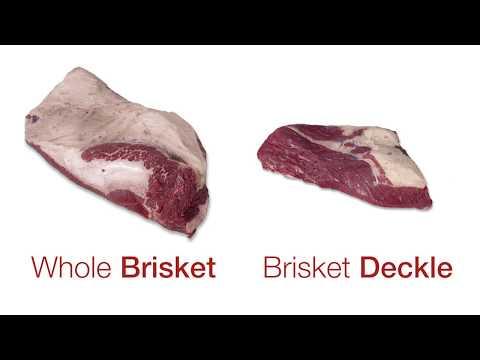
The deckle of a brisket refers to the fat and muscle that attaches the flat cut to the rib cage of the cow. It is not the layer of fat between the flat and point cuts, as some people mistakenly believe. The deckle is often not found on supermarket briskets, but it can be present in whole packer briskets or when purchasing from local butchers. The presence of the deckle affects the grain direction and fat distribution of the brisket, making it important to consider when choosing which part of the brisket to cook.
How to pick a brisket
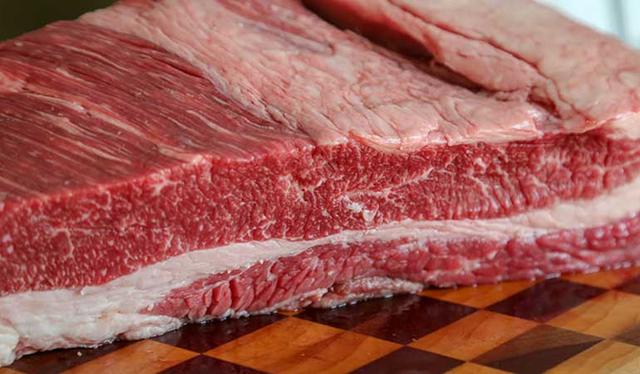
When selecting a brisket, there are several factors to consider. One option is to choose the packer cut, which is the whole brisket that hasn’t been trimmed or processed. This allows you to trim it yourself and have a larger amount of meat to enjoy. Keep in mind that cooking a whole packer brisket can take up to 24 hours, so plan accordingly.
You can find brisket cuts and packer briskets at local grocery stores, warehouse clubs, or from online stores. Local butchers may offer higher quality cuts and can provide tips on preparation. Prices for brisket can vary, but on average it ranges from $6 to $8 per pound for flat cuts and as low as $2 to $3 per pound for packer briskets.
What is a packer brisket?
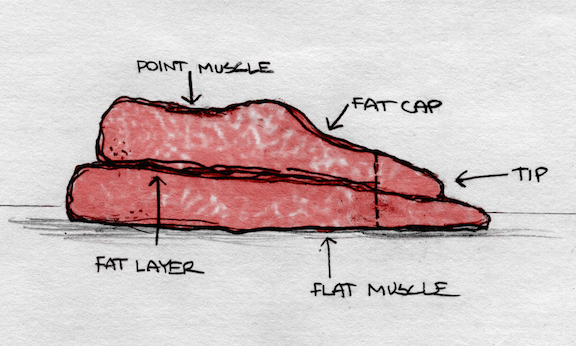
A packer brisket refers to the whole, untrimmed cut of beef brisket. It includes both the flat and point cuts, with the fat layer (fat cap) intact. Packer briskets are typically larger in size and can weigh anywhere from eight to 20 pounds. They are called “packer” because they are commonly found in packaging used by meat processors or suppliers.
Purchasing a packer brisket allows you to trim it yourself according to your preference. However, it is important to note that cooking a whole packer brisket requires a significant amount of time. It can take approximately 1.5-2 hours per pound to cook, meaning a 12-pound trimmed packer brisket could take up to 24 hours. Additionally, during the cooking process, the brisket will shrink in size due to water loss.
Brisket Shrinkage
When cooking brisket, it’s important to note that there will be some shrinkage. This is because raw brisket contains a high amount of water, and the cooking process pulls out this moisture. Dry cooking methods, like smoking, cause the brisket to shrink more than damp heat methods like braising.
If you’re planning to serve a large group, it’s important to consider the amount of shrinkage. On average, smoked brisket can shrink by 30-40 percent. So if you’re cooking a 12-pound trimmed packer brisket, you can expect it to end up being around 7-8 pounds after cooking.
Understanding the amount of shrinkage that occurs during cooking will help you plan accordingly and ensure that you have enough brisket to serve your guests.
Where to buy brisket?
Brisket cuts and packer briskets can typically be found at grocery stores, warehouse clubs, and local butchers. Grocery stores often offer lower prices, while local butchers may have higher quality and provide personalized service. Warehouse clubs like Costco, BJ’s, or Sam’s Club sell larger briskets. Online stores also offer brisket and Wagyu brisket with home delivery options. Prices for brisket can vary, with average prices ranging from $6 to $8 per pound for flat cuts and as low as $2 to $3 per pound for packer briskets.
How much is brisket per pound?
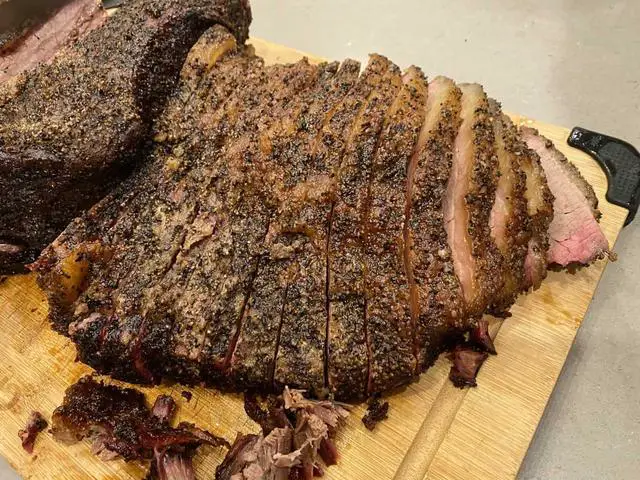
The cost of brisket depends on a few factors, including the cut and quality of the meat. On average, brisket is around $6 to $8 per pound for flat cuts and packer briskets can be as low as $2 to $3 per pound. However, prices may vary depending on where you purchase your brisket.
BBQ Brisket
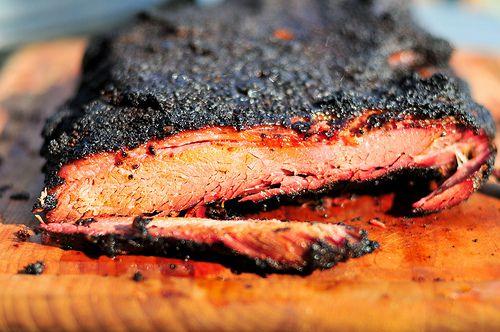
Brisket is a popular cut of meat for barbecuing, known for its rich flavor and tenderness when cooked properly. It requires slow, low temperature cooking to break down the connective tissue and render the fat, resulting in juicy and tender meat.
There are various ways to cook brisket, from smoking to braising and even making corned beef. The key is to give it enough time to cook at a low temperature, allowing the layer of fat to break down and tenderize the meat. This process can take several hours or even up to 24 hours for larger cuts.
When barbecuing brisket, it’s important to choose the right cut and trim it according to your preferences. You can find briskets at grocery stores, warehouse clubs, or local butchers. The price may vary depending on factors such as quality and whether it is a whole packer brisket or trimmed cut.
Brisket Recipes
1. Smoked Brisket: Start with a simple brisket rub of salt and black pepper, then smoke the brisket low and slow until it reaches an internal temperature of 203-205°F for a tender and juicy result.
2. Brisket Tacos: Repurpose your leftover brisket by turning it into delicious tacos. Simply warm up the brisket, shred it, and serve in tortillas with your favorite toppings like salsa, avocado, and cilantro.
3. Braised Brisket: For a flavorful and tender dish, braise the brisket in a mixture of broth, onions, garlic, and spices. Cook it slowly in the oven until it becomes melt-in-your-mouth delicious.
4. Corned Beef: Cure the brisket in a brine mixture of salt, sugar, pickling spices, and water for several days to create corned beef. Boil or steam the corned beef until it’s cooked through and serve with cabbage and potatoes.
5. Brisket Pot Roast: Slow cook the brisket in a Dutch oven with vegetables like carrots, potatoes, and onions for a comforting pot roast meal. The long cooking time will make the meat tender and flavorful.
Smoked brisket
Smoked brisket is a popular and delicious way to cook this tough cut of meat. The low and slow cooking process allows the connective tissue to break down, resulting in a tender and flavorful brisket. To smoke a brisket, you’ll need to rub it with a seasoning blend and then cook it slowly over indirect heat for several hours. The goal is to reach an internal temperature of 203-205°F for the perfect slice of smoked brisket.
There are many recipes and techniques for smoking brisket, ranging from simple to more involved. Some pitmasters even choose to inject their briskets with marinades for added flavor and moisture. Regardless of the recipe you choose, be prepared for the stall, when the internal temperature of the meat stays around 160-165°F for a while as the fat renders. It’s important to plan ahead and give yourself plenty of time when smoking a brisket.
Corned Beef
Corned beef is a popular variation of brisket that is often associated with St. Patrick’s Day and Irish cuisine. It gets its name from the “corns” or grains of salt that are used to cure the meat. The process involves soaking the brisket in a brine solution for several days, which not only adds flavor but also helps to tenderize the meat. After brining, the corned beef is typically simmered or boiled until it is fork-tender. It is often served sliced with cabbage and potatoes, making it a hearty and flavorful meal.
How to Store and Reheat Brisket
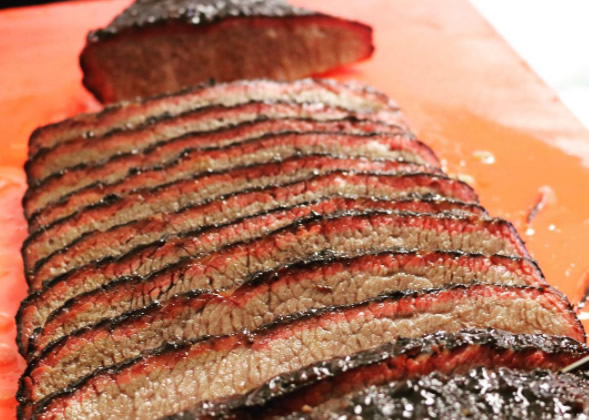
Storing and reheating brisket requires some planning, but the leftovers are well worth the effort. If you think you’ll use your cooked brisket in a few days, opt for storing it in the refrigerator. Wrap the brisket tightly in plastic wrap or aluminum foil before placing it in an airtight container or resealable bag. This will help prevent any moisture loss and keep the meat fresh.
If you won’t be using the brisket for a few weeks, it’s best to freeze it. Before freezing, make sure the brisket has cooled completely. Wrap it tightly in plastic wrap and then wrap it again with aluminum foil to prevent freezer burn. Place the wrapped brisket in a freezer-safe bag or container and label it with the date.
To reheat brisket, ideally, you should use the same cooking method you used initially. If that’s not possible, there are other options available. One popular method is reheating in the oven. Preheat your oven to 325°F (163°C) and place the wrapped brisket on a baking sheet. Heat for about 30 minutes per pound until it reaches an internal temperature of 165°F (74°C).
Final Thoughts on Brisket
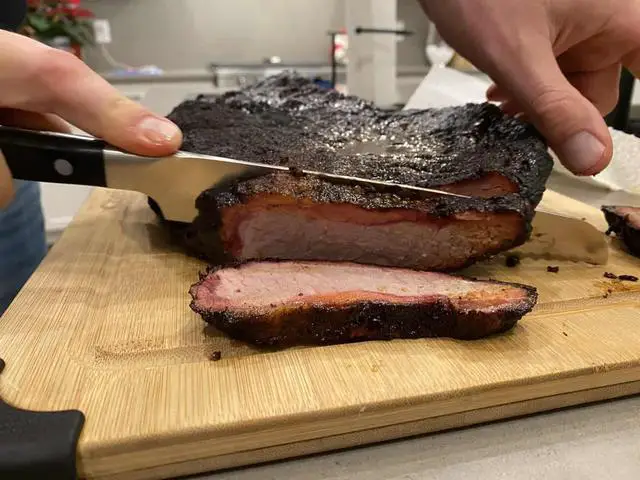
Brisket is a versatile and flavorful cut of meat that has gained popularity around the world. From its origins as a cheap and undervalued cut, brisket has become a beloved staple in many cuisines, including Texas barbecue and Jewish pot roasts. Its large size and tough texture make it ideal for slow cooking methods like smoking or braising, which help to break down the connective tissue and create tender, juicy meat.
When purchasing brisket, there are different cuts to consider, each with its own fat distribution and cooking properties. The packer cut is the whole untrimmed brisket, which allows for customization and yields a generous amount of meat. However, cooking brisket requires time and patience, as it can take several hours or even days to achieve the desired tenderness.
Despite its challenges, cooking brisket is well worth the effort. Whether you prefer traditional smoked barbecue or experimenting with different flavors and recipes, brisket offers a rich and satisfying dining experience. Plus, it’s not just delicious but also packed with nutrients like protein and essential vitamins and minerals.
FAQs
What is brisket?
Brisket is a cut of meat located in the front of the lower chest area of a cow. It is one of the primal cuts of beef and contains a lot of connective tissue.
Why is brisket popular?
Brisket used to be one of the cheapest options, making it a popular choice for ranchers, immigrants, and those on a budget. Today, it remains somewhat affordable but has gained popularity due to smoked brisket becoming a favorite across North America.
How do you cook brisket?
To maximize the flavor and tenderness of brisket, it is generally cooked using low heat and slow cooking methods such as smoking or braising.
Where can you buy brisket?
You can find brisket cuts at most grocery stores, warehouse clubs like Costco, BJ’s or Sam’s Club, or from local butchers. Online stores also offer brisket with home delivery options.
How much does brisket cost?
The cost of brisket varies depending on factors such as quality and location. On average, flat cuts and packer briskets range from $6 to $8 per pound.
What are some dishes that use brisket?
Brisket is commonly used in dishes such as smoked BBQ, corned beef, pastrami, pot roast, and braised brisket. It can be paired with various spices and flavors depending on cultural preferences.
Is brisket considered a good cut of meat?
Yes, brisket is considered a good cut of meat. While it used to be a cheaper option due to its tough texture and the need for slow cooking, it has now become more prized in barbecue circles. When cooked properly, brisket becomes tender and flavorful, making it a delicious choice for meals. It is also a good source of protein and contains heart-healthy fatty acids, B vitamins, zinc, iron, phosphorus, and selenium.
How should brisket be cooked?
Brisket is best cooked using a low and slow cooking method to break down the connective tissues and render the fat, resulting in a tender and flavorful meat. This can be done through smoking, braising, or roasting. The key is to cook it at a low temperature for a long period of time, allowing the flavors to develop and the meat to become tender. Many pitmasters recommend smoking brisket at a temperature of around 225-250°F until it reaches an internal temperature of 203-205°F for optimal tenderness.
When smoking brisket, it’s important to monitor the temperature closely and maintain a consistent heat. This can take several hours or even up to 24 hours depending on the size of the brisket. The goal is to achieve that perfect balance of smoky flavor, juicy texture, and tender meat.
What is brisket called at the grocery store?
At the grocery store, brisket is typically labeled as “brisket” or “beef brisket.” You may also find it referred to as “packer cut brisket” if it has not been trimmed or processed. Some stores may offer different cuts of brisket, such as flat cuts or point cuts, which refer to specific parts of the brisket with varying amounts of fat. Additionally, you may come across bone-in briskets or whole boneless briskets.
Is pastrami a brisket?
Yes, pastrami is made from brisket. Pastrami is a cured and smoked meat that is typically made from beef brisket. The brisket is first brined in a mixture of salt, sugar, and spices, then it is smoked and steamed to create the tender and flavorful pastrami that we know and love. So, if you are a fan of pastrami, you are essentially enjoying a delicious cut of brisket.
In summary, brisket is a cut of meat from the chest area of a cow that is known for its rich, tender, and flavorful qualities. It is commonly used in various cuisines and cooking methods, such as smoking or braising, to create delectable dishes. Whether enjoyed as a BBQ favorite or incorporated into different recipes, brisket offers a satisfying culinary experience for meat lovers.
Learn More About Grilling
If you want to learn more about grilling, check out these other helpful resources!

